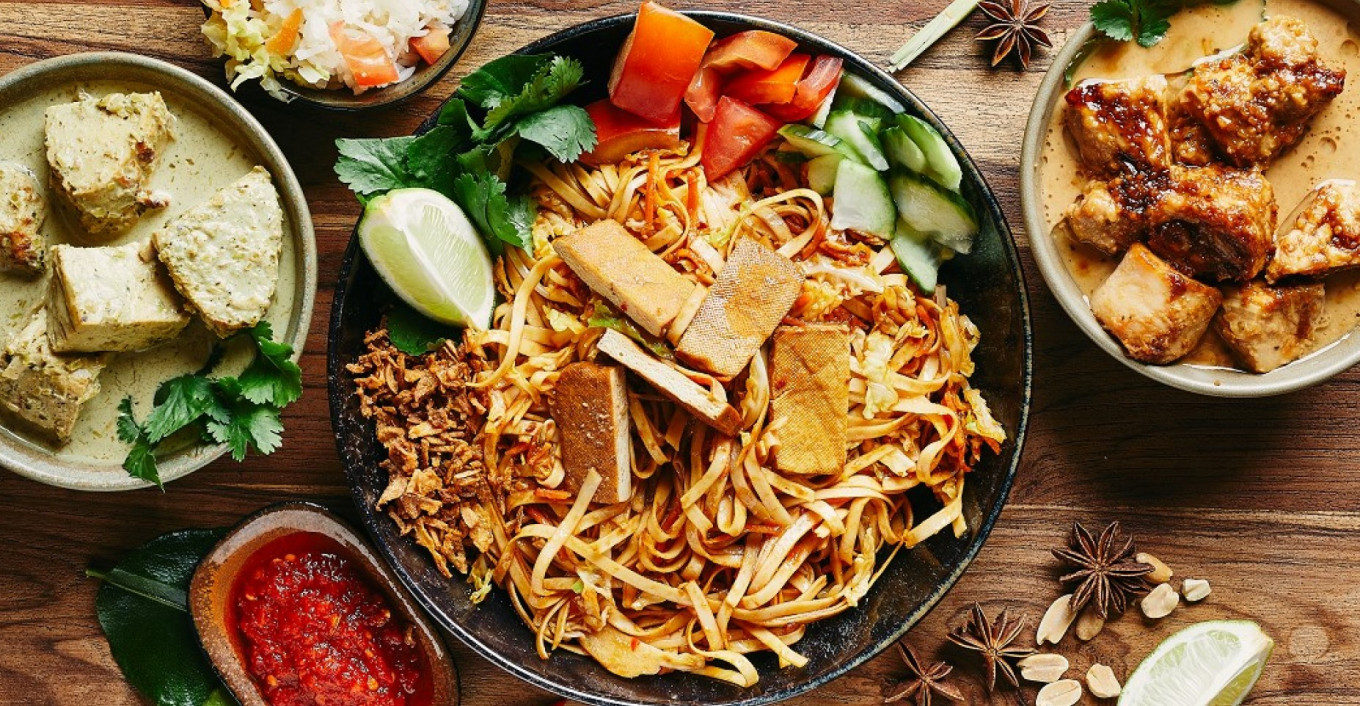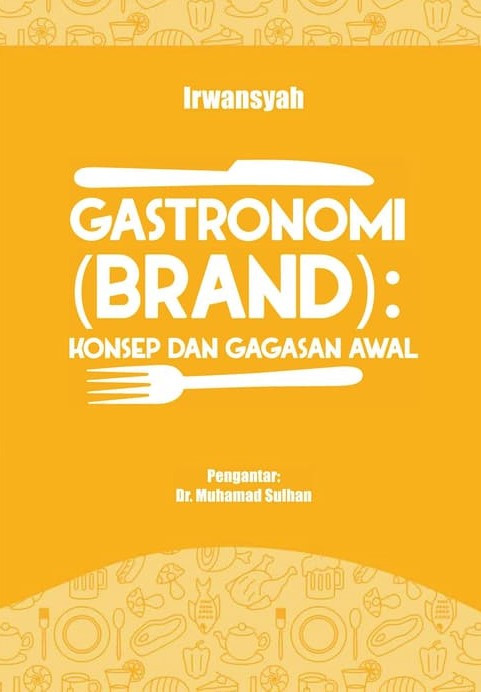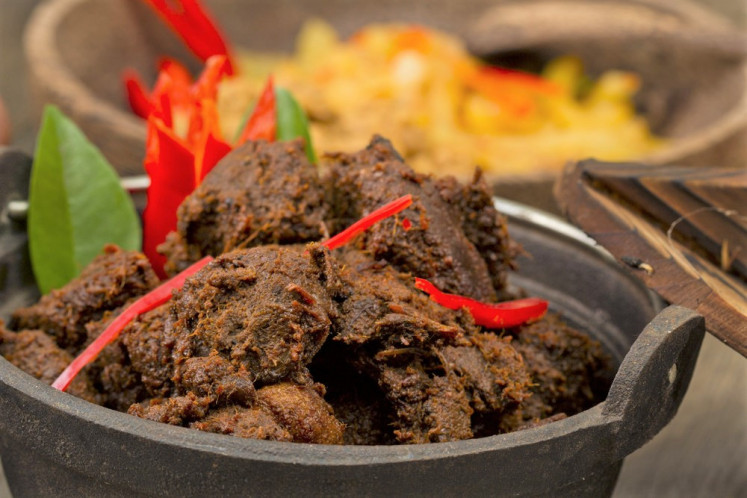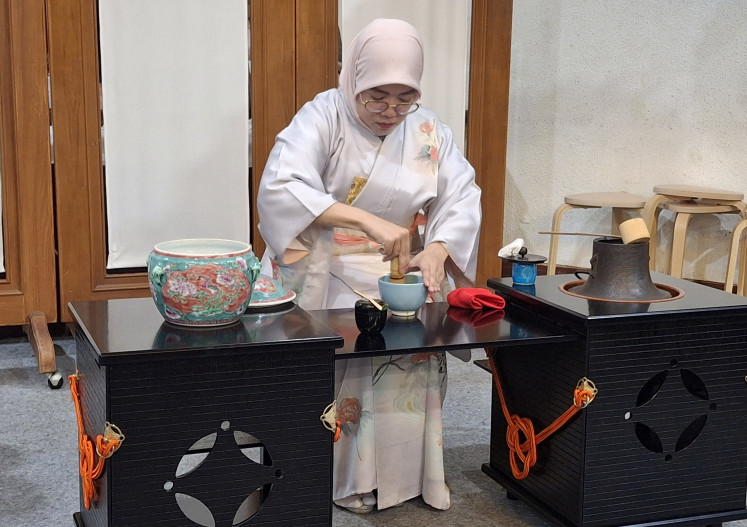Popular Reads
Top Results
Can't find what you're looking for?
View all search resultsPopular Reads
Top Results
Can't find what you're looking for?
View all search resultsLocal taste, global palate: Indonesian cuisine as gastronomic diplomacy
As mouth-watering as they are, Indonesian dishes have yet to be spoken of in the same way as their Italian or French counterparts on the world stage – and this is where some gastronomic diplomacy is needed.
Change text size
Gift Premium Articles
to Anyone
W
ith its rich spices and endless regional variation, Indonesian cuisine is everything you want it to be – comfort food after a long day, cure for homesickness in a faraway land or even just your everyday lunch.
Based on his findings when doing research for his book Gastronomi Brand, author Irwansyah said both Indonesian students and expatriates still thought of Indonesian food as just nasi goreng (fried rice) and rendang (meat slow-cooked in coconut milk and spices).
“In my experience as a student at the University of Hawaii, even when we are thousands of miles away from Indonesia, we will always be on the lookout for noodles, Indomie in particular,” he said in a webinar hosted by the International Relations Alumni Family of the University of Gadjah Mada (KAHIGAMA) and the Indonesian Gastronomy Community.
National branding: A country's cuisine can be marketed as part of its national branding, like how the United Kingdom is synonymous with tea. (Courtesy of Irwansyah/-)
But beyond instant noodles, there lies an opportunity for cultural diplomacy through food.
Prior to the 1970s, Irwansyah explained, gastronomy was thought to be about mealtimes and the characteristics of dining.
The 1990s then brought about the era of fast food and franchises, before culminating in the 2000s with the idea that “we are what we eat”.
“We began to think that the food we consumed represented our own character. This concept is what I developed to compare each nation’s approach.”
For example, the United Kingdom has a custom of having tea as a specific meal of the day, whereas Italy is heavy on tradition and the notion of family.
“When cuisine can be transformed into a nation’s identity and become a part of that nation’s branding, it will become an influential symbol that can offer an emotional experience [...] We have to agree to cast [Indonesian] cuisine as a cultural artifact vital to Indonesia’s branding,” Irwansyah said.
Cecep Herawan, secretary general of the Foreign Ministry, said Indonesia could take a page out of France’s playbook, which had managed to elevate French cuisine to the level of global cultural heritage.
“With our wide variety of culinary examples infused with history and culture, I think we’d be able to achieve that. There is a national process that has to be done first, by listing the cultural varieties of Indonesian food.
“I heard that the Education and Culture Ministry have included rendang on the list. Once it’s on the list, we can then push for UNESCO to include it in the list of cultural heritage,” he said.
A taste of Nusantara: 'Rendang' (meat slow-cooked in coconut milk and spices) is a prime example of a renowned Indonesian dish. (Courtesy of Shutterstock/-)Stephanie Dambron, proprietor of the Djawa restaurants in Paris, highlighted the important role of the Indonesian diaspora in spreading Indonesian cuisine.
“I have many customers who didn’t know anything about Indonesia before coming to my restaurants, and then they chose to travel there for their holidays because they discovered Djawa’s food and liked it,” said Stephanie, who is half French and half Indonesian.
Djawa, which began in 2010 as a catering business, opened its doors in 2012 and has since then expanded to five locations in the city center. The restaurant specializes in street food, with dishes like satay, mi goreng (fried noodle) and rendang.
Indonesian cuisine, Stephanie says, runs the spectrum in terms of preparation and taste, from sweet and salty to aromatic and spicy.
The wide range of spices used in the dishes is also a benefit – and not just for the taste buds – as spices have a longer shelf life than fresh ingredients.
Also interesting to note is Indonesian cuisine’s relative obscurity on the global gastronomy scene. While this is certainly a challenge, it is also an opportunity as it allows Indonesia to shape what it can offer to the world.
“Although Indonesia’s incredible beauty also resides in the diversity of its islands and people and culinary specialties, I think it is very important to present a simplified selection – a persistent selection that you always come across when you go to an Indonesian restaurant anywhere in the world,” Stephanie said.
Indonesian flavor: Starting as a catering business in 2010, Djawa opened its doors in 2012 and has since expanded to five locations in the Paris city center. (Courtesy of Ubud Food Festival/-)The selection of dishes must be iconic – typical, traditional and able to be found throughout the country. However, the dishes must also be compatible with the local tastes of each country.
For example, Stephanie noted that if you proposed empek-empek (fish cakes) in France, it might not work because they smelled strange to French diners and had an unfamiliar texture.
On the other hand, she said, nasi goreng could easily be enjoyed by a majority of people, while satay sauce, although it provoked a lot of enthusiasm, was a love-it-or-hate-it food.
Marketability plays a strong role as well. Martabak, for example, particularly the sweet version, can be marketed as a pancake. On the other hand, lontong (rice cake) may not fare as well because locals do not have a familiar image of it.
“On the international market, people don’t know anything about Indonesian food, so I think it’s too early to focus on the regional specificities of a particular dish. [...] It is very important to promote real, authentic Indonesian culture through the food, but also to add some flexibility to be able to market it well internationally.”
The myriad of regional variations can also prove confusing when trying out Indonesian food for the first time.
Agus Saptono, consul general of Indonesia in Mumbai, India, noted the difficulty of explaining an Indonesian dish like soto (soup), which varies greatly from Jakarta to Kalimantan.
Rendang served at Djawa, for instance, has its spiciness chopped in half to accommodate the French palate. The sauce is much more generous in serving, and the overall texture is much more liquid.
Though making these changes broke her heart, Stephanie said, the changes needed to be accepted to see the bigger picture in making Indonesian cuisine more famous. Fusion food is also out of the question, as it will dilute the branding and distinction.
“It is impossible to create a fusion of Indonesian dishes and a little bit of Thai because it needs to be very clear to present Indonesia as something very different from and independent of other Southeast Asian countries.” (ste)














